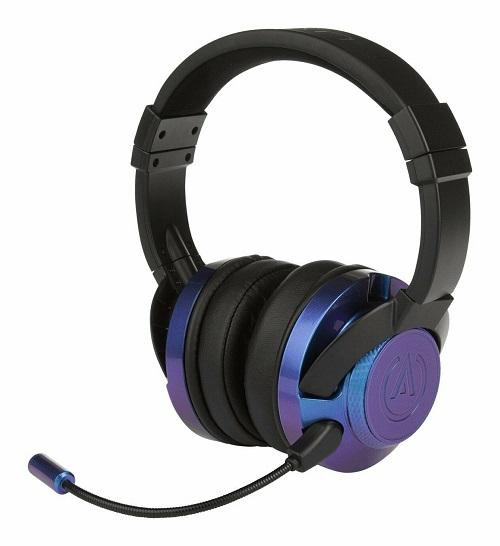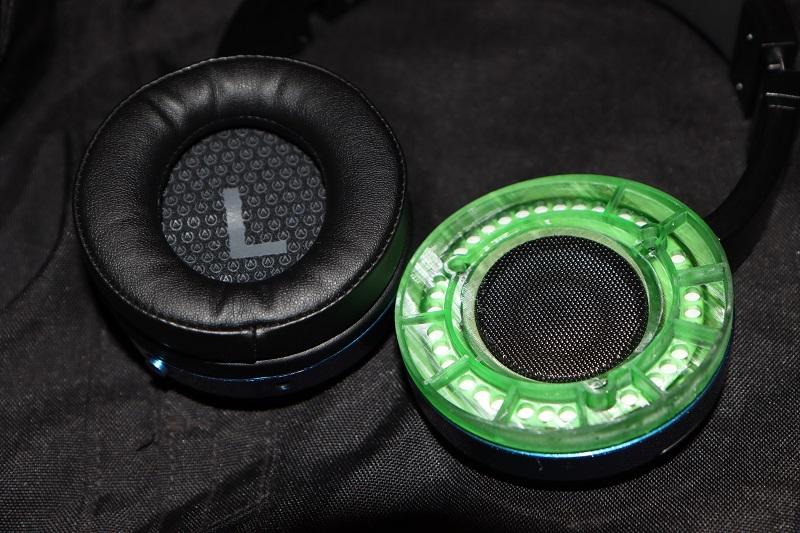This post is a copy of one I made elsewhere on the Alibre CAD forum following some trouble shooting, then I found out they have some competition on there right now, so decided to go all out in documenting the project, rather than just lazily post a few files. This post contains a complete break down of my research and (half cocked) analysis, hopefully this is useful to other people here too.https://www.alibreforum.com/forum/index.php?threads/studio-grade-headphones-on-the-cheap-a-diy-3d-printable-project.22335/This post mentions prices in £ and $ - these refer to UK Pounds and US Dollars.
(I will refrain from linking to particular parts listings, as if folks happen to all rush to the same place it might cause them to jack the price up, or run out of stock.)
In Short:Spend as small an amount of money (and time) as possible and get awesome, robust, repairable studio performance headphones that should have cost you in the region of £300-600/$400-800 off the shelf, for a mere £75/$100 or so.
(and as small as £20-25/$28-35, if you compromise on drivers, and therefore accept certain limitations)


Ooooh, shiney. (also available in discrete plain black, white, pink (?) & so on)






Being +/- 5 dB of baseline is pretty typical of good headphone drivers.


Distortion measured at respective levels in dB SPL as shown on the right.
(Note: limitations of the test microphone also seem to also inflate measured distortion at lower levels)
** Files attached to this post for opening and editing in Alibre, and also the STL files for both default model versions for sending directly to printer without any further editing. **Assembly Notes:Just go with modifying your preferred cosmetic choice of PowerA Fusion headphones with aliexpress (etc) imported 'fostex' 50mm (32 ohm version) microfibre drivers installed in the provided 3D printed insert and cotton + pillow stuffing in the rear chamber, if you *just* want some best bang for the buck headphones that will blow your metaphorical socks off, and aren't too bothered about, or interested in digesting several pages of design intent and analysis.
Also I strongly advise removing the internal headphone volume control in the left hand ear cup, bypassing it electrically (its kind of silly, and gets in the way); followed by trimming the plastic supports which held it in place with wire cutters, or your weapon of choice. Then, fill the hole the shaft engaged with with glue to stop the earcup shim from rotating.
For Best Results:Use a sound source, or dedicated headphone amp which is known to deliver decent power/current to them. The in-built headphone amps in some professional sound cards are pretty decent, and some mixers too.
I tend to use a portable xDuoo - XD05 headphone amp/dac - this is an affordable state of the art XMOS/AKM powered soundcard capable of playing back DSD material (if you have it), and can support 384 kHz at 32 bits (in theory, and quite needlessly excessive (you are a bat, right?)), and most importantly has massive output power (more than you'll need, but the transient dynamics will thank you). Also it can connect to PC/Phone via USB, Optical, or a lossless Bluetooth adaptor. Also, it is a mere £200/$289 for this top shelf product; lesser models, even from xDuoo, are available for around £50-120/$35-155 with various levels of compromise.
You will however, with headphones like these, realise just how irredeemably awful some sound sources/amps are. However, you can expect them to produce (more or less) the best sound any given device is capable of producing.
For sub bass (in particular) that will absolutely rattle your head off, natural dynamics, and clarity up top; be sure to invest in a proper headphone amp, or a decent source.
I like having the option of ramping / experiencing already prominent extremely low bass sometimes, and having the kick drums and bass drones rattle my head; it has a curious way of engaging you with the material, without annoying the neighbours (we're still talking headphones, right ?), distorting the overall tonal balance, or presenting any real risk to your hearing - unlike just turning up everything really, really loud.
Why would you want/need a pair?:Well designed headphones are the cheapest and most effective route to truly high quality, private listening experiences which negate the need for spending thousands on a studio monitoring grade speaker setup, acoustic room treatment, and sitting in that one optimal sweet spot the entire time to get a similar result. (somewhat) recent advances in driver technology mean that this is both affordable too, exists in the realm of reality (not marketing-land); oh, and fits in your bag, and can go everywhere with you.
Also, the market is absolutely flooded with garbage headphones (even in the professional realm) which fail to reproduce material faithfully, or satisfyingly. The solution from there on out is to either know the good from the bad (whilst not getting sold snake oil by deluded salesmen) and purchase one of the few commercially available, faithful models at considerable expense... Or, build your own using known good parts for close to the materials cost the manufacturer of such pays.
A great test of system dynamics is Eivør Pálsdóttir's album Slør - It is a curious mix of varied bjork'esue (but much better) Keltic/tribal sounding music which mixes acoustic instruments, female vocals, massive drums and pins the lot together on a bed of minimal electronic synthery, and general weirdness.
(She is good, and varied - give her your money)
Find a copy in *uncompressed* format Flac/CD, whatever ...and then compare it to what the version on youtube sounds like, the difference in detail and dynamics is absolutely shocking.
(I prefer the version *not* in English)
Whatever your music tastes, you might find something to like about it, its an interesting album.
Use Responsibly:With all of the headphone drivers mentioned later, you will find optimal listening levels between 10 o'clock and 12 o'clock on the xDuoo XD-05's volume dial on the first gain switch setting (yes, this headphone amp has a silly name). This translates to a rough median output range (source material dependent) of 60-80 dB SPL at the ear. Which in the background 'silence' of headphones, is perceived as louder than you might think. Generally, its quite safe, particularly if you stick to around that average of 60-80 dB SPL
Official guidance on safe SPLs whilst limiting the possibility of long term hearing damage is as follows.Permissible exposure times:82 dB - 16 hours
85 dB - 8 hours
88 dB - 4 hours
91 dB - 1 hours
94 dB - 30 mins
97 dB - 15 mins
100 dB - 7 1/2 mins
106 dB - 3 3/4 mins
(yay, fractions - remember those ?)
For content that isn't heavily compressed, this is my general observation for listening level comfort:50-55 dB SPL - somewhat quiet.
60-65 dB SPL - normal quiet.
70-75 dB SPL - normal clear.
80-85 dB SPL - getting loud.
By that measure, i assume my personal headphone, and other sound exposure tendencies to be generally quite responsible. Which explains (in part) why despite not having been a teenager for some time now, I can hear roughly 16 khz or so with no apparent attenuation just fine.
All of these headphones have been measured as generally capable of 100-106 dB SPL (although some might burn out quickly), and remarkably some of them handle that with no appreciable increase to distortion (the fostex like 50mm driver for one). In as much, consider using (overall) volume controls responsibly.
Also, consider measuring typical listening levels once in a while with a reputable spl meter (not your iPhone - sorry), if you want be 'sure' accuracy, play a 1 kHz tone with the headphones on something other than your head, and observe the measurement for the meter jammed in the cup. regardless of exposure weighting settings of the meter, this is at a frequency all good meters give zero calibrated attenuation to.
All in, if it sounds uncomfortably loud, or you observe a reduction in hearing threshold after use, consider your life choices.
Curiosity Note 1: The entire dynamic range of a CD / typical (universal baseline) 16 bit audio file is a 'mere' 96 dB - go figure on how that factors into all such relating considerations

As for film soundtracks, its higher at 24 bits, at a theoretical 144 dB - for heavily impactful transient reproductions of key scenes at high levels when played at 'full' volume. Given that most 24 bit or more DACs can actually often struggle to keep the noise floor in control below 20 bits - a clean 120 dB; theres plenty of interesting audio engineering discussion rabbit holes to disappear down.
Curiosity Note 1B: The total useful dynamic range of human hearing is around 120dB, the threshold of pain is around the same. As for perception of quieter sounds against louder ones at different frequencies, it is much narrower (and at last count currently actively debated). In as much, the critical perceptibility of distortion is lower than you might expect, depending on the source material, and where in the frequency range it occurs.
Curiosity Note 2: Due to reduced direct sensitivity of the ear to (low) bass (you feel the majority of it at high spls), you can safely tolerate it at much higher levels without need to reduce exposure. Quite why clubs and bars 'insist' on loud consisting of the distorted mid-high mess comparable to the mating calls of serenading angle grinders is quite beyond me (its not fun, or healthy frankly - and as for the poor (bar) staff, well).
Note 3: For more information of this sort (if you love details, and whatnot) and my working method, see the final sections of this post.
** PART 2 of 7 Follows.. **